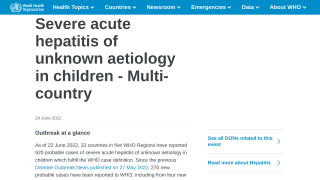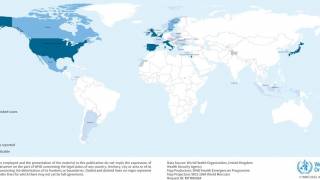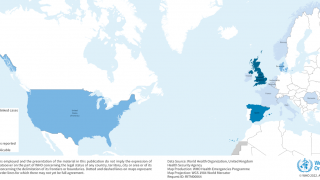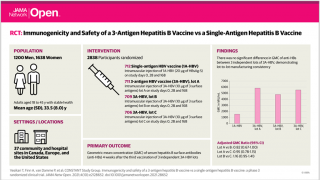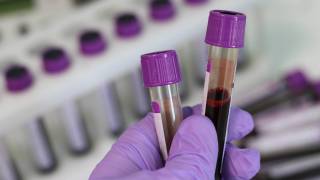World Hepatitis Day 2019: Invest in Hepatitis Elimination

To celebrate World Hepatitis Day 2019, the World Health Organization (WHO) is focusing on the need for increased financing for hepatitis prevention, testing, treatment, and care services in the context of universal health coverage (UHC) with a slogan, “Invest in eliminating hepatitis”.
Launching on July 28, 2019, the World Hepatitis Day 2019 campaign says ‘Countries and partners need to work together to achieve the most optimal prices for hepatitis drugs and diagnostics to make access possible for more people.’
The World Hepatitis Day 2019 campaign intends to achieve the following objectives:
- Urge national and regional policymakers increase political and financial commitments for hepatitis response,
- Highlight WHO’s new cost estimates for hepatitis elimination within the context of health-related Sustainable Development Goals (SDGs) and UHC by 2030, and
- Encourage more people to come forward to access hepatitis prevention, testing and treatment services
The Top 10 World Hepatitis Day message points are as follows:
- Investing in hepatitis is a smart decision for broader health outcomes. Investments in hepatitis elimination would lead to a 1.5% increase in the global health price tag, but such investments would bring greater returns on better general health outcomes. Funding hepatitis testing and treatment services as part of UHC efforts can cut global deaths by 5% and increase healthy life years by about 10% by 2030.
- Viral hepatitis B and C affect 325 million people worldwide, leading to about 1.4 million deaths a year. It is the second major killer infectious disease after tuberculosis, and 9 times more people are infected with hepatitis than HIV.
- Hepatitis can be prevented, diagnosed, treated and managed well. The hepatitis B vaccine is 98-100% effective in preventing new infections. For hepatitis B, people should be tested and if found positive and eligible, provided with lifelong treatment. For hepatitis C, people can be cured with a simple 2-3 month treatment with direct-acting antiviral (DAA) drugs.
- Over 80 percent of people living with hepatitis lack access to testing or treatment. Among people living with hepatitis B, only 10% (27 million) knew their infection status in 2016. Of these diagnosed people, only 17% (4.5 million) received treatment. Among people living with hepatitis C, 19% (13.1 million) knew their infection status in 2017, of which 15% (2 million) received cure in that same year. Overall, between 2014 and 2017, 5 million people have received a hepatitis C cure worldwide.
- At the same time, people are becoming newly infected due to a lack of prevention services. In 2017, 1.1 million people were newly infected and developed chronic hepatitis B infection and 1.75 million people developed chronic hepatitis C infection. Together, hepatitis B and C account for the highest number of new infections from among other major infectious diseases such as HIV and tuberculosis.
- Achieving hepatitis elimination by 2030 will require a major increase in funding for hepatitis prevention, testing and treatment services as part of achieving universal health coverage (UHC). A new WHO costing analysis underlines that additional funding of US $6 billion per year will be needed in low- and middle-income countries (LMIC) between 2016 and 2030, in order to achieve hepatitis elimination targets.
- As of April 2019, 124 countries have developed or were developing, national hepatitis plans and strategies. But many of these plans lack funding. In 2017, only 58% of the 82 reported LMIC had included domestic funding in their national hepatitis plans.
- The WHO’s new analysis shows that hepatitis testing and treatment are high-impact interventions that can help countries accelerate progress towards UHC. But prices for medicines and tests are very uneven and they can be very expensive in some countries. For example, hepatitis C medicines can cost as high as US$120 000 in some high-income countries. But in Pakistan, the same curative treatment can be obtained at US $15.
- Investing in hepatitis testing and treatment means preventing liver cancer. Chronic infections of hepatitis B and C viruses may not show symptoms for a long period, sometimes years or decades. They slowly and silently damage the liver, eventually causing cancer. Over 60% of liver cancer cases are due to late testing and treatment of viral hepatitis B and C infections. Two-thirds of these cancer cases are caused by hepatitis B, and one third by hepatitis C.
- On World Hepatitis Day 2019, help stop the neglect of viral hepatitis – share information about it. Educate yourself and others to learn risks for viral hepatitis, and access testing services. If you have been diagnosed with hepatitis B or C, speak with health workers about potential treatment, monitoring or curative therapy. If detected early, the risk of chronic illnesses and financial burden for you and your family can be averted. Take action today.
World Hepatitis Day recognizes the birthday of Dr. Baruch Blumberg (1925-2011). Dr. Blumberg discovered the hepatitis B virus in 1967 and two years later developed the first hepatitis B vaccine. For these achievements, he won the Nobel Prize in 1976.
Since March 2017, CDC’s Division of Viral Hepatitis has been assisting multiple state and local health departments with hepatitis A outbreaks, spread through person-to-person contact.
As of July 19, 2019, over 22,200 hepatitis A cases had been confirmed during this outbreak, reported the CDC.
As a regional example, the Cincinnati, Ohio area has become a leading hepatitis A hot-spot, reporting 1,060 cases as of July 15, 2019.
Unfortunately, Ohio is not the only heartland state reporting hepatitis A cases during the 2016-2019 outbreak. Kentucky has reported (4,766), West Virginia (2,528), Tennessee (1,983), and Indiana (1,744) hepatitis A cases.
Additionally, the CDC’s Advisory Committee on Immunization Practices (ACIP) voted on June 27, 2019, to recommend all children and adolescents aged 2 through 18 years who have not previously received the hepatitis A vaccine be vaccinated.
Furthermore, the ACIP unanimously recommended updating the language concerning the utilization of hepatitis A vaccine in the Vaccines-for-Children program.
“Hepatitis isn’t a disease we hear about often, but it’s still prevalent despite being preventable. Hepatitis B and now hepatitis A vaccinations are recommended for children, but adults that did not receive the vaccines in childhood may still be at risk,” said Holly Hawbaker, Pharm D Candidate, Intern for Brookshires Grocery Company.
“Patients should talk to their doctor or pharmacist to determine if they’re at risk for hepatitis, and if they are, they can receive the appropriate hepatitis vaccine or discuss ways to reduce their risk of getting hepatitis C, which currently does not have a vaccine.”
The US Centers for Disease Control and Prevention (CDC) said on July 22, 2019, to ‘take action today’ by sharing this 5-minute online assessment which offers a personalized report on hepatitis testing and vaccination recommendations.
Our Trust Standards: Medical Advisory Committee



